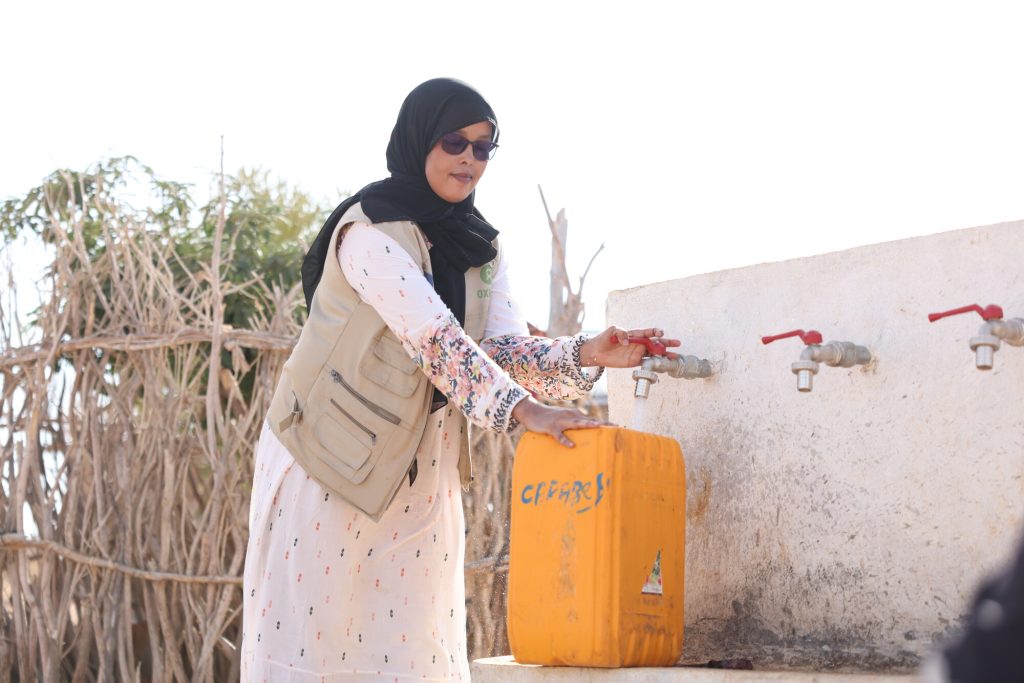SDIR subcommittee Study on the Patterns of Forced Migration in Different Regions of the World
Oxfam Canada was invited to testify at the Parliamentary Subcommittee on International Human Rights on their study on patterns on forced migration in different regions of the world. The study will provide recommendations to the Government of Canada on actions they can take to support refugees and internally displaced peoples impacted by forced migration.
Oxfam Canada's Testimony
Thank you for inviting me to appear before the committee today. My name is Lauren Ravon and I am the executive director of Oxfam Canada.
Every single day, families around the world are being forced from their homes in search of safety and a better life. They are risking everything to escape conflict, natural disasters, violence, or hunger – often leaving with nothing but the clothes on their backs.
In my ten years with Oxfam, I have witnessed forced displacement increase significantly. Last month I visited Somalia, where I met with families who had fled their land and were now living in makeshift tents on the outskirts of villages. Their living conditions were so precarious, and yet they knew they would never be able to return to their homes and pastoral livelihood – after four years of intense droughts, their land has been rendered uninhabitable.
I also visited the border between Sudan and South Sudan. I remember standing on the main road that connects the two countries, and seeing hundreds of people by the hour crossing over the border by foot under the beating sun – almost all were mothers and grandmothers with their children. Many of them had been displaced twice – first seeking refuge in Sudan when the civil war broke out in their country, and then fleeing back as returnees after violence erupted in Khartoum – knowing very well the conditions aren’t in place for their safe return, but left with no other choice.
Forced migration is not a new phenomenon, but in recent years, its scope has expanded dramatically. There are now a staggering 120 million people who have been forcibly displaced around the world. The reasons for this rise are complex and varied. Whether it’s the devastation caused by violent conflict, persecution, or the worsening impacts of climate change, people around the world are being driven from their homes in ever-increasing numbers.
In Sudan, more than 10 million people have been displaced since the conflict broke out. It’s the worst internal displacement crisis in the world today. 6.8 million people are internally displaced in the Democratic Republic of the Congo, and 2.9 million in Myanmar. About 1.9 million Palestinians have been displaced in the Gaza strip, with many forced to flee multiple times. In all of these contexts, the cause of displacement is conflict and those who pay the price are civilians.
Syrians account for almost 1 in 5 refugees globally, with 6.5 million Syrians hosted in 131 countries. More than 7.7 million Venezuelans have left their country over the last decade. This is the largest exodus in Latin America’s recent history and one of the largest displacement crises in the world.
In Central and South America, organized crime, economic hardship, and political corruption have left countless individuals with no choice but to embark on dangerous journeys northward. Meanwhile, in parts of Sub-Saharan Africa, droughts, floods, and other environmental catastrophes have wiped out livelihoods, leading to large-scale displacement as communities seek safety and sustenance elsewhere. In South Asia, the 2022 floods in Pakistan resulted in nearly 1,700 deaths and more than 8 million people displaced.
Oxfam, an organization with a long history in humanitarian work, has been at the forefront of responding to forced migration. Through our programs, we help people who have been displaced meet their basic needs – access to clean water, food, shelter, and safety. We are also working to address the underlying causes of forced migration. Our advocacy for systemic changes, aimed at reducing poverty, conflict, and inequality, speaks to the need for long-term solutions that go beyond immediate humanitarian response.
Forced migration is a global issue that demands a global response. Canada has been a leader in welcoming refugees, and its commitment to providing safe haven for those in need is a source of national pride. And yet there is more we can do collectively.
To conclude, Oxfam has four recommendations for the Government of Canada that I will share with the committee now:
- Firstly, Canada should increase its levels of humanitarian aid. We should expand our support to countries grappling with large internal displacement crises, as well as to countries that are hosting large number of refugees, providing financial resources and technical assistance to help meet the needs of these populations.
- Secondly, Canada must recognize and address climate change as a driver of displacement. As climate change increasingly forces people to leave their homes, Canada should advocate for global action on climate migration and support policies that provide protections for climate refugees.
- Thirdly, Canada should champion international cooperation and work with international partners to improve the resettlement process, enhance legal pathways for migration, and ensure that the human rights of all displaced people are upheld.
- Finally, the only way to stem the tide of forced migration is to promote sustainable development. Investing in long-term development programs in regions prone to forced migration can address some of the root causes, thereby reducing the need for people to flee.
Forced migration is not just a humanitarian crisis; it is a test of our collective humanity.
Thank you for the opportunity to appear, I am happy to answer any questions you may have.

